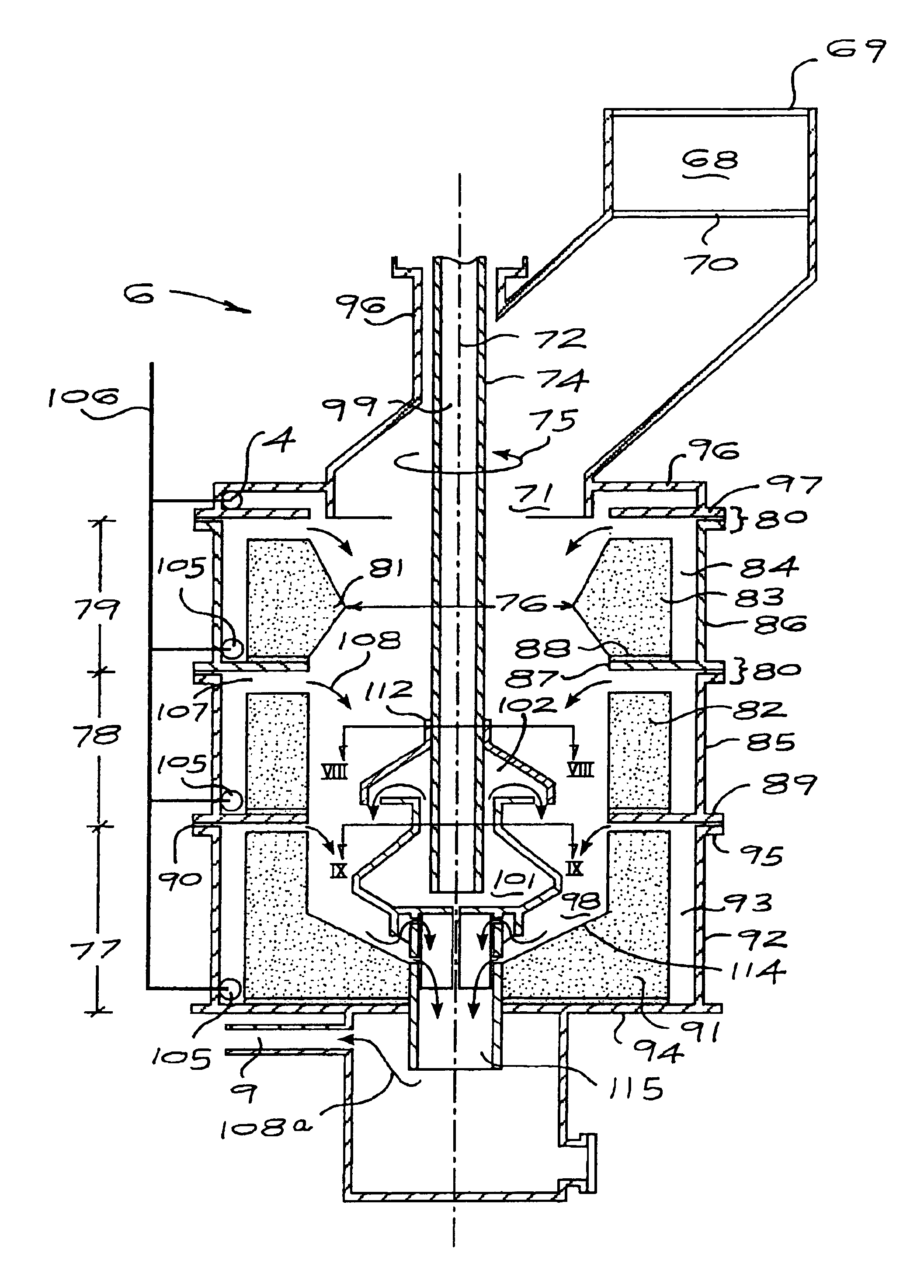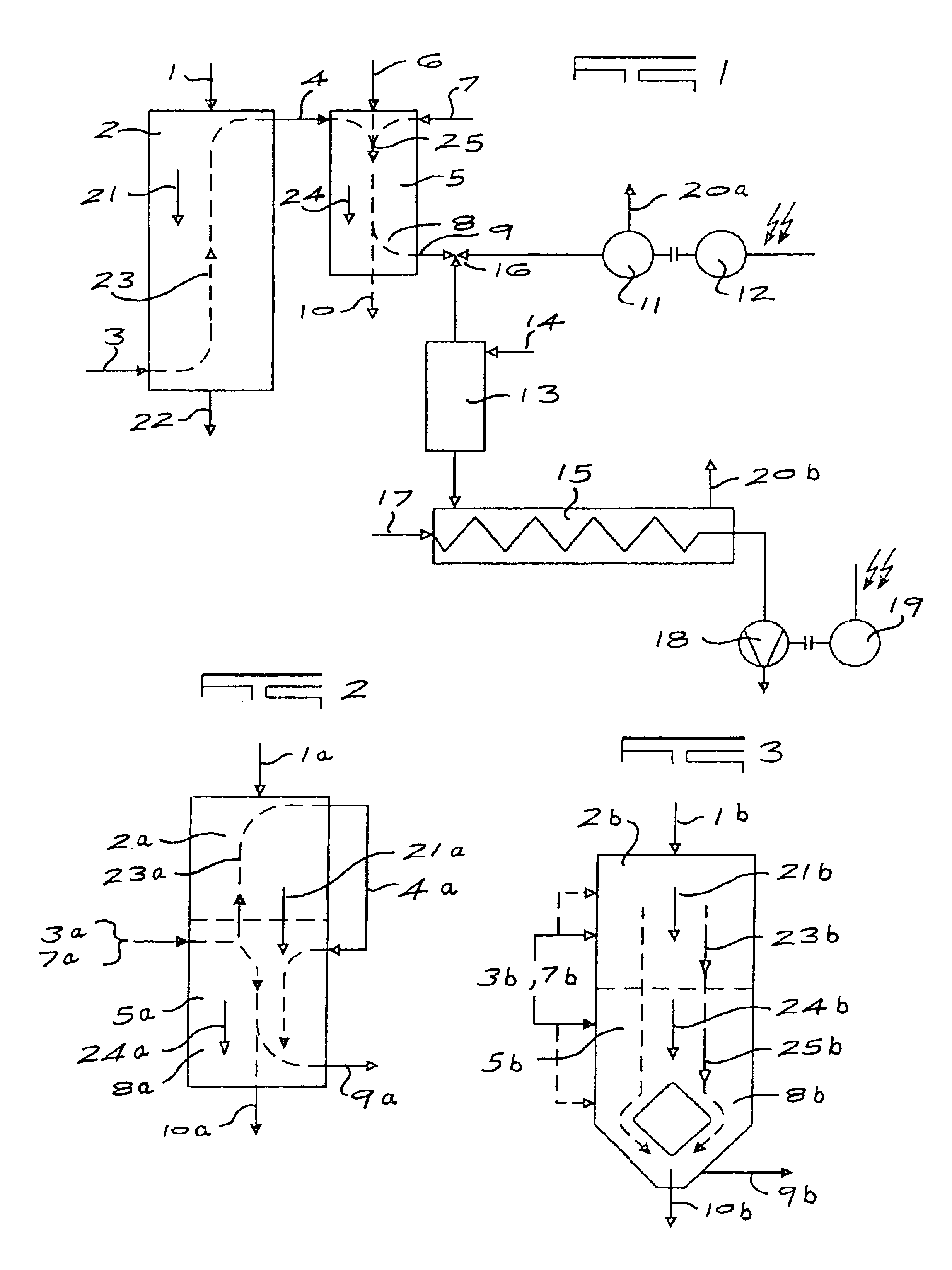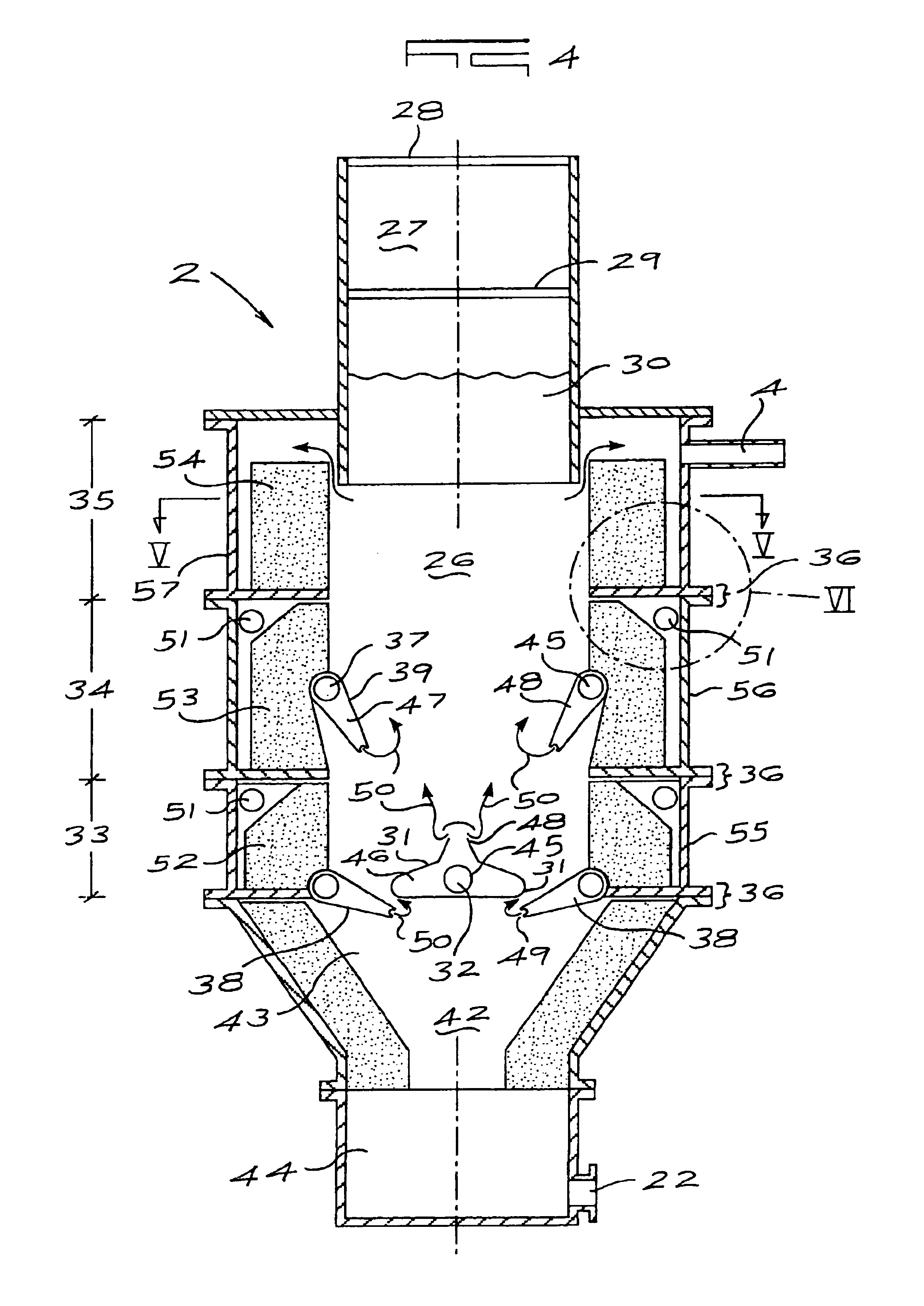Process and gas generator for generating fuel gas
a gas generator and fuel gas technology, applied in the details of gasification process, special form destructive distillation, combustion process, etc., can solve the problems of faulty reactions, constant pressure gradient within the particulate solids bed, and inability to homogeneous solids density, etc., to achieve high fuel gas quality, reduce the cross-section of the particulate solids bed, and optimise the effect of gas quality
- Summary
- Abstract
- Description
- Claims
- Application Information
AI Technical Summary
Benefits of technology
Problems solved by technology
Method used
Image
Examples
Embodiment Construction
[0062]In FIG. 1 the process according to the invention is illustrated by way of a flow sheet. The solids to be gasified having organic material contents, in the working example dry-distillable biomass such as, e.g., waste wood, straw bales or even bio-garbage which is difficult to rot or plastics containing metal such as wastes from metal reinforced insulating materials or old tyres are introduced by way of a solids feed 1 into a dry distillation reactor 2 and are there heated, dried thereby and subjected to dry distillation. The solids are heated in the dry distillation reactor by partial combustion of the organic material contents with the addition of gasification medium which, in relation to the oxidisable solids content of the introduced solids, is added in substoichiometrical amount The gasification medium flows by way of a gasification means supply 3 into the dry distillation reactor 2.
[0063]The dry distillation volatiles formed in the dry distillation reactor 2 by heating of ...
PUM
 Login to View More
Login to View More Abstract
Description
Claims
Application Information
 Login to View More
Login to View More - R&D
- Intellectual Property
- Life Sciences
- Materials
- Tech Scout
- Unparalleled Data Quality
- Higher Quality Content
- 60% Fewer Hallucinations
Browse by: Latest US Patents, China's latest patents, Technical Efficacy Thesaurus, Application Domain, Technology Topic, Popular Technical Reports.
© 2025 PatSnap. All rights reserved.Legal|Privacy policy|Modern Slavery Act Transparency Statement|Sitemap|About US| Contact US: help@patsnap.com



